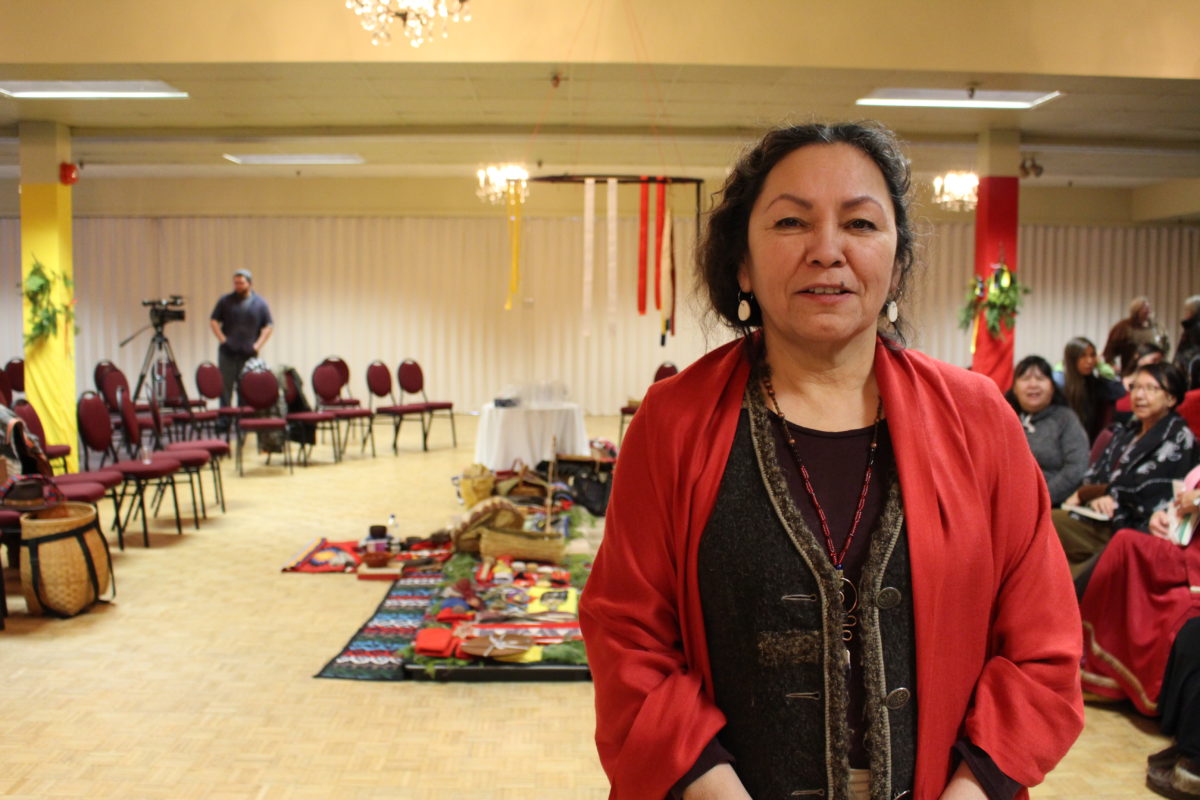Wolastoqiyik Grand Chief Ron Tremblay shared perspectives on how life began, the creation of the world and the unity found in the symbol of a pipe as part of the Longhouse Elders Gathering at St. Thomas University.
Approximately 80 people, including elders from across the province, attended the first day of the midwinter celebrations on Feb. 9 at the STU Conference Centre on Forest Hill.
The celebration is part of the university’s efforts to incorporate Indigenous perspectives and knowledge into its curriculum and community, as per the Truth and Reconciliation Commission’s calls to action.
“The importance of the ceremony is very crucial to our people. Knowing the teachings from the longhouse and the teachings of our culture traditionally,” said Tremblay.

The celebrations included the lighting of the sacred fire, introducing the longhouse, history of original Wabanaki systems, talking circles and elder workshops. Ceremonies were held morning and night, with people coming together to share meals and stories.
Miigam’agan, STU’s elder-in-residence, said the fire is normally kept burning for 10 days in celebration.
“It was more like what you’ll understand today as a greenhouse or co-living, it was to conserve as much as we can, and then to maintain life. That’s what the midwinter gathering was about,” she said.
Miigam’agan said the longhouse is seen as the original political sphere where the day-to-day workings of people would be discussed. Miigam’agan wants to show young people how the longhouse was operated and how the ancestors lived.


“It was our form of governance, it was our way of worship and it was how we were able to continually support our economic and social systems,” said Miigam’agan.
“But it was more like, instead of separated, our longhouses were designed to conduct our support — that whole development of individual family and nation.”
The talking circle on Feb. 10 involved grandmothers recounting stories of family, of times passed by, challenges they’ve struggled to overcome and their current emotions.
The talking circle is also used to share wisdom and teach young people about their culture.
A common topic among the grandmothers was the loss of language in the youth.
All who gathered patiently listened to each story as the air filled with feelings of understanding and nostalgia. Emotions ran deep with the occasional tear shed, but laughter still erupted within the circle from time to time.


“When you invite ceremony and the sacred, you get a very clear direction where to go, because it’s for the betterment of all people and it’s the betterment of all creation when they come to some sort of consensus,” said Tremblay.
Tremblay discussed the loss of Indigenous languages and cultures amongst the younger generations. He said he believes this gap in knowledge is because communities aren’t as solid as they used to be.
“Now the young people who are in their 20s, 30s, and 40s, the majority of them have moved out of our communities,” Tremblay said.


“So we have to bridge that gap between the Western knowledge they have and bring it back to Wabanaki knowledge we have.”
Tremblay knows a lot of young people don’t know the language, but he said it ultimately leads to them also not know a lot about the ceremonies and governance due to the key role language plays.
“This [celebration] would also promote to the young people and teach them that the huge part of who we are, or the main part of who we are, is rooted in our language.”

